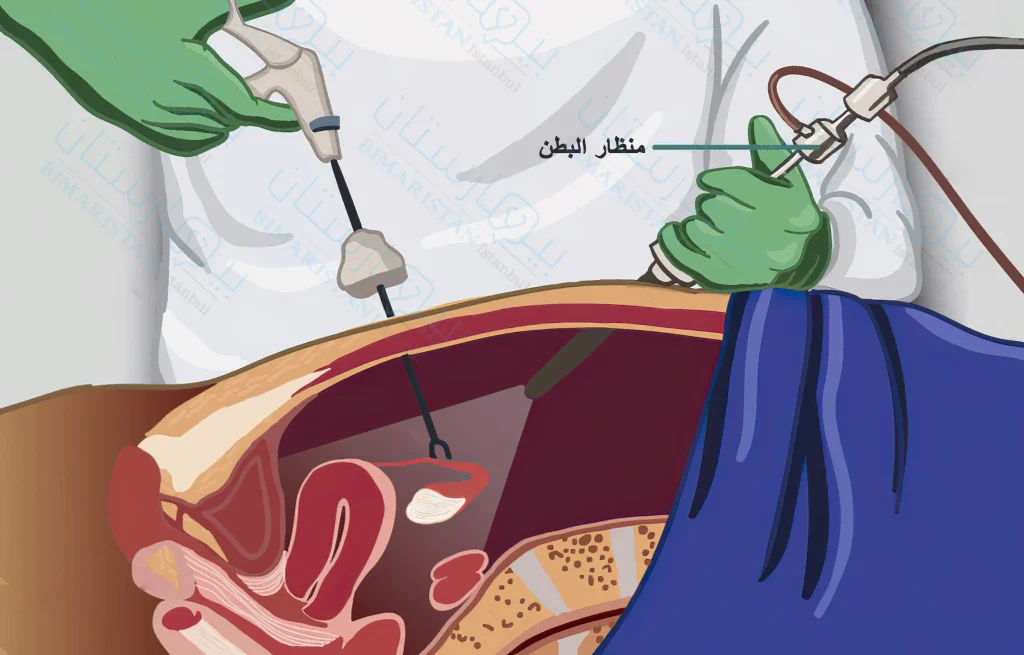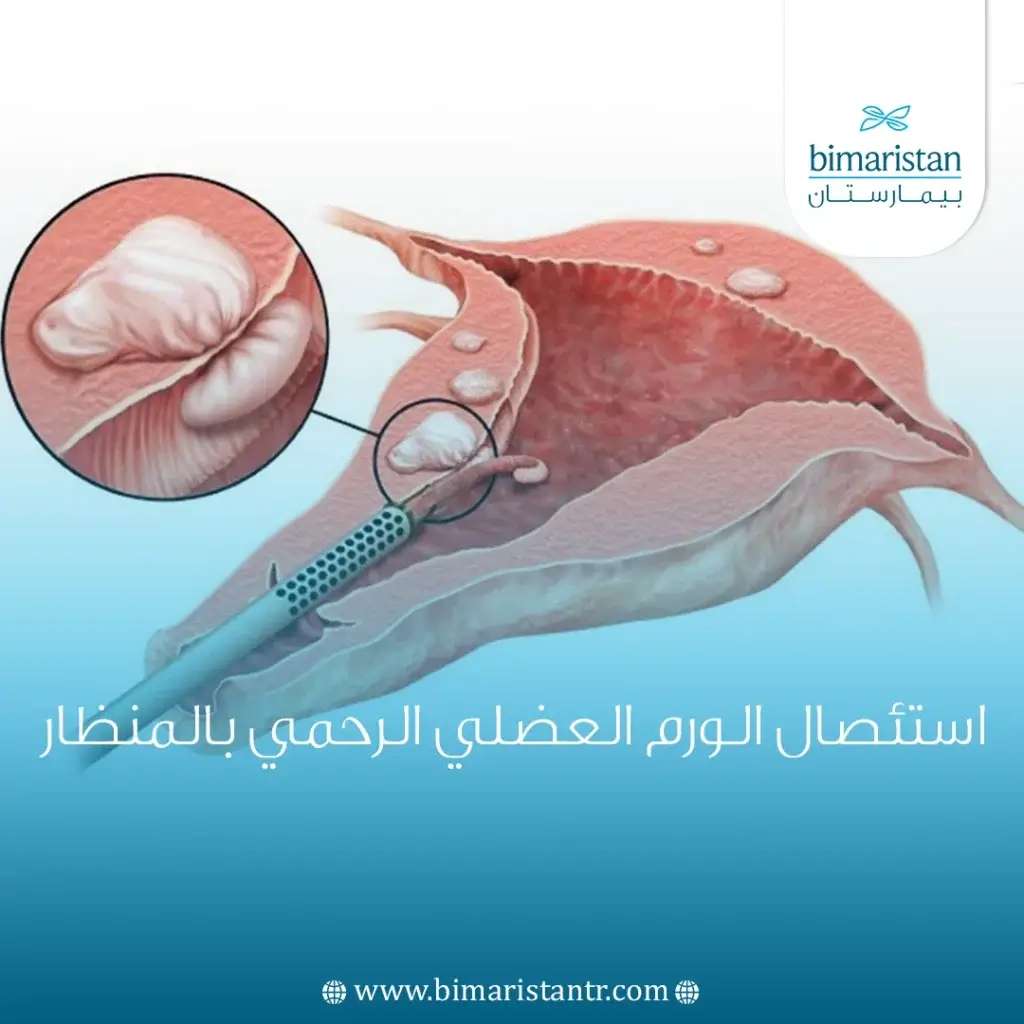يعد الورم العضلي الأملس أشيع الأورام السليمة عند النساء في سن النشاط التناسلي، وقد أثبت استئصال الورم العضلي الرحمي بالمنظار كفاءته أمام الطرق الأخرى لعلاج هذه الأورام في تركيا.
إنَّ الرحم هو من أشيع أماكن نشوء السرطانات سليمةً كانت أم خبيثة، لذلك تنوعت واختلفت الطرق الجراحية والدوائية وظهرت العديد من القفزات النوعية في علاج أمراض هذا العضو وخاصةً لما له من وظيفة هامة في حمل الأجنة والحفاظ على النوع البشري.
ما هو الورم العضلي الأملس؟
الورم العضلي الأملس Leiomyoma هو ورم حميد Benign في الطبقة المتوسطة الثخينة من جدار الرحم وهي الطبقة العضلية (ينشأ على حساب عضلات الرحم) التي تتقلص أثناء المخاض والطمث، وهو غالباً ما يظهر في سنين النشاط التناسلي للمرأة.
من النادر جداً أن تتطور هذه الأورام إلى أورام خبيثة، لكن في بعض الحالات (30% من الحالات) يمكن أن تسبب العديد من الأعراض عند المصابات. يعد هذا الورم من أشيع الأورام من بين الاورام الرحمية الحميدة التي تنتشر بكثرة عند النساء.
تختلف هذه الأورام في الحجم بشكل كبير ويمكن أن يكون لدى المريضة أكثر من ورم واحد في مناطق مختلفة من عضلية الرحم. تزيد هذه الأورام من خطورة الإسقاط أو الإجهاض العفوي لدى المريضات كما من الممكن أن تسبب العقم لديهن.
يُطلق على هذا الورم اسم Fibroid أيضاً وهو مصطلح أعم يشمل الأورام الليفية والعضلية التي تنشأ بشكل نموذجي في جدار الرحم، لذلك يمكن أن يطلق على هذه العملية باسم عملية استئصال الورم الليفي الرحمي بالمنظار.
ما هي الجراحات التي تجرى عادةً لاستئصال الورم العضلي الرحمي؟
تدعى جراحة إزالة الورم العضلي الرحمي (أو استئصال الـ Fibroids) بـ Myomectomy.
هنالك عدة طرق يمكن فيها إجراء هذه الجراحة وهي:
- استئصال الورم العضلي الرحمي المفتوح عبر البطن (البطني) Open Abdominal Myomectomy: وفيها يقوم الدكتور بعمل شق جراحي في أسفل البطن (يكون الشق غالباً بشكل أفقي) ليصل إلى الرحم ويستأصل الورم.
- استئصال الورم العضلي الرحمي بالمنظار Laparoscopic Myomectomy: وهو ما سنتحدث عنه بشكل مفصل لاحقاً في المقال.
- استئصال الورم الرحمي العضلي روبوتياً Robotic Myomectomy: يشبه كثيراً طريقة استئصال الورم العضلي الرحمي بالمنظار إلا أنَّ الطبيب هنا يجلس بعيداً عن المريض ويتحكم بأدوات روبوتية عبر أداة تحكم عن بعد مما يسمح بوصول أكبر للورم ورؤية أوضح.
- استئصال الورم العضلي الرحمي عبر تنظير الرحم (منظار داخلي) Hysteroscopic Myomectomy: حيث يقوم الطبيب باستئصال الورم عبر إدخال منظار (مع أدوات طبية أخرى) إلى المهبل وعبر عنق الرحم حتى يصل إلى مكان الورم.
يتوفر في تركيا عدة علاجات أخرى غير جراحية لهذا الورم ذات كفاءة عالية مثل علاج الأورام الليفية (العضلية) باستخدام القثطرة.

متى نقوم بعملية استئصال السرطان في الرحم بالمنظار عوضاً عن الطرق الأخرى؟
إنَّ إجراء الجراحة بالمنظار Laparoscope له عدة مزايا عن باقي الطرق ونذكر منها:
- الألم أقل وضياع الدم أقل ومُسيطر عليه.
- مشاكل جمالية أقل بكثير مقارنةً مع استخدام الاستئصال بفتح البطن.
- التصاقات أقل.
- تعافي أسرع بعد الجراحة مقارنةً بباقي الطرق.
- لا تحتاج المريضة للبقاء في المستشفى أكثر من ليلة واحدة.
لكن لا يمكن استخدام جراحة الورم العضلي الرحمي بالمنظار في جميع الحالات إذ هنالك شروط يجب أن تتوافر لتحقق هذه الجراحة أفضل النتائج فيُشترط:
- أن يكون الرحم ذو حركية جيدة تسمح بالمناورة.
- ألّا يتجاوز قطر الورم 10 Cm كأقصى حد (بالطبع هنالك استثناءات تعتمد على الحالة والمريض).
- ألّا يكون هنالك أكثر من 5 أورام Fibroids.
- أن يكون هنالك ساحة جراحية كافية للعمل الجراحي وأن لا يكون الورم عميق فيتعذر الاستئصال.
من هنَّ المرشحات لعملية استئصال الورم العضلي بالمنظار؟
إنَّ أي مريضة تشكو من أعراض ناجمة عن وجود هذه الأورام أو أن الورم قد سبب لديها العديد من الإسقاطات السابقة أو أثر في نشاطها اليومي والجنسي تعد مرشحة لعملية استئصال الورم العضلي الرحمي بالمنظار.
كما تعد عملية استئصال الورم العضلى الرحمي بالمنظار مناسبة عند المريضات اللواتي يردن الإنجاب في المستقبل أو لا يردن استئصال الرحم بشكل كامل (كما يحدث في كثير من الحلول العلاجية) لأسباب أخرى.
من الأعراض التي قد تظهر عند المصابة بهذه الأورام:
- ألم حوضي أو بطني شديد لا يزول لوحده
- نزوف خارج وقت الطمث
- دورة شهرية مضطربة (أطول أو أقصر)
- صعوبة في التبول أو سلس بولي في بعض الحالات
- فقر دم غير مفسر
التحضيرات قبل العملية
في حال تم اتخاذ القرار بإجراء العملية يجب على المريضة مراجعة طبيب الجراحة قبل العملية ليخبرها بالتحضيرات اللازمة. يجب إخبار الطبيب عن نوع الأدوية التي تتناولها المريضة أياً كانت (فيتامينات، أدوية داعمة…) والطبيب هو من يحدد الأدوية التي يجب إيقافها. تُخبر المريضة بإيقاف تناول الطعام والشراب قبل ساعات من العملية (غالباً ساعة منتصف الليل ليلة العملية).
يمكن إعطاء أدوية لتصغير حجم الورم عند المريضة مثل الأدوية المعروفة باسم شادات الهرمون المفرز للموجهة القندية Gonadotropin-releasing Hormone Agonists. أيضاً يمكن إعطاء أدوية معززة للحديد عند المريضة لمنع حدوث نزوف ثقيلة ومعالجة فقر الدم.
تُجرى اختبارات مختلفة لتحديد فيما كانت المريضة جاهزة للعمل الجراحي ومنها:
- إيكو بطن
- تصوير بالرنين المغناطيسي MRI
- بعض الاختبارت الدموية
- تخطيط قلب ECG
كيف تُجرى عملية استئصال الورم العضلي الرحمي بالمنظار؟
يمكن أن تُجرى العملية تحت تخدير عام للمريضة أو تخدير لمنطقة البطن فقط اعتماداً على مدة العملية ورغبة المريضة وعدة عوامل أخرى، لكن في الغالب يُفضل التخدير العام.
بدايةً، يتم إجراء أربعة شقوق صغيرة بقطر سنتيمتر واحد (أو نصف إنش) في أسفل البطن. تكون هذه الشقوق موزعة فواحد يُجرى بالقرب من السرة والآخر قريب من شعر العانة ويُجرى شق بالقرب من كل ورك. ثم يُملأ التجويف البطني بغاز ثاني أكسيد الكربون Co2 لمساعدة الجراح على الرؤية داخل البطن.
يُدخل الطبيب المنظار عبر الثقب السري، وهو أنبوب رفيع ينتهي بضوء وكاميرا (يسمى منظار البطن Laparoscope)، من خلال أحد الشقوق حيث يسمح منظار البطن برؤية المبيضين وقناتي فالوب والرحم.
في حال كانت الأورام كبيرة الحجم يستخدم أداة معينة قاطعة للأورام تدعى القاطع Morcellator حيث يقوم هذا الجهاز بتقطيع الورم العضلي الرحمي إلى قطع صغيرة (تناسب حجم الشقوق المُجراة) يستطيع الطبيب إخراجها باستخدام أدوات طبية أُدخلت عبر الشقوق الأخرى.
يتم خياطة عضلة الرحم مكان استئصال الورم، وفي نهاية الإجراء، يتم إطلاق الغاز المحقون وخياطة الشقوق الجراحية. تستغرق العملية غالباً أقل من ثلاث ساعات.
من الممكن أن يُغير الطبيب طريق وسير الجراحة إلى الجراحة المفتوحة Open Abdominal Myomectomy في حال استصعب استئصال الورم وطالت فترة العملية.
في جراحة إستئصال الورم العضلي الرحمي روبوتياً تُجرى نفس الخطوات المذكورة إلا أنَّ الطبيب يتحكم بيد روبوتية عن بعد لتنوب مكانه في إجراء العملية.

في حال استصعب عليكِ فهم خطوات العملية أو أردتِ السؤال عن تكلفتها، لا تترددي بالتواصل معنا، مركز بيمارستان عائلتك في تركيا.
الاختلاطات وما بعد العملية
كما في أي عملية طفيفة التوغل، فإنَّ عملية استئصال الورم العضلي الرحمي بالمنظار لها اختلاطات عدة على الرغم من أنها نادرة، ومن هذه الاختلاطات:
- إنتان في موضع الشقوق الجراحية
- مشاكل تخديرية ناجمة عن عدم موافقة الدواء جسم المريض
- نزف شديد (نادر جداً نظراً لكون الجراحة طفيفة التوغل والشقوق صغيرة)
- تشكل خثرات بعد العملية
- أذية في الأعضاء المجاورة داخل البطن
- عدم استئصال الورم بشكل كامل مما يؤدي إلى نموه مرة أخرى ومعاودة الأعراض عند المريضة

كما رأينا فإنَّ اختلاطات عملية استئصال الورم العضلي الرحمي نادرة وهي ليست أكثر من أقل عملية اختلاطاً. أما بالنسبة للتعافي فعادةً لا تبقى المريضة في المستشفى أكثر من ليلة واحدة. وتتعافى المريضة من العمل الجراحي بعد أسبوعين أو ثلاثة على الأكثر.
ستشعر المريضة ببعض الألم ومن المحتمل أي يحدث لديها نزيف مهبلي خفيف متقطع، ولهذا يقوم الطبيب بإعطاء أدوية مسكنة للألم للتحسين من حالة المريضة ونفسيتها. يجب الانتظار لمدة أسبوعين أو ثلاثة قبل ممارسة بعض الأعمال الشاقة أو الجماع تحسباً من حدوث نزوف او تمزّق في القطب الجراحية.
المصادر:
